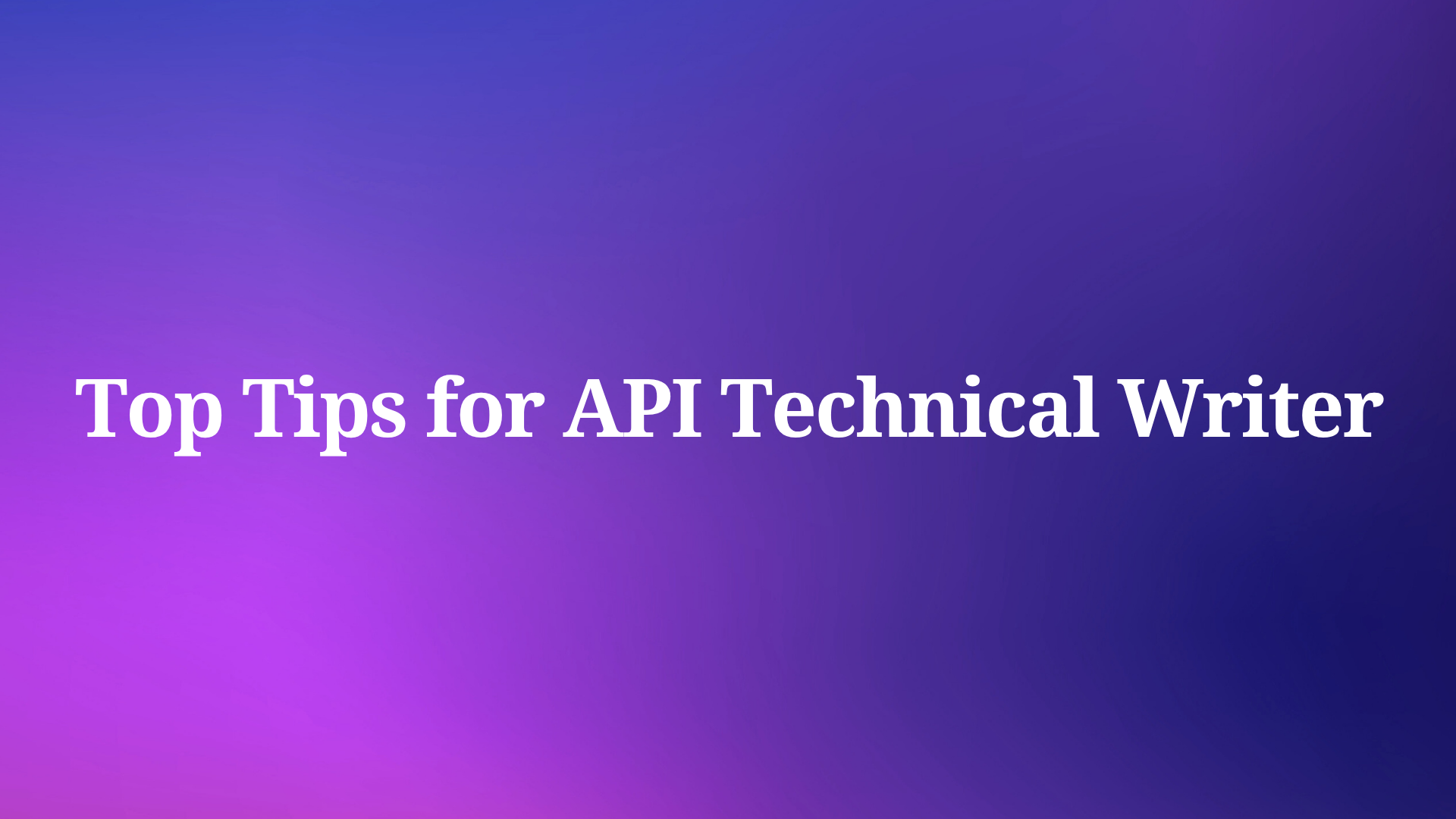APIs (Application Programming Interfaces) are the backbone of seamless integration between different systems and services. Whether you're building complex web applications, integrating third-party services, or creating microservices architectures, APIs play a crucial role in enabling communication and functionality across diverse platforms. For back-end developers, mastering the right API tools can significantly enhance productivity, streamline workflows, and ensure robust, scalable applications.
This guide aims to shed light on the best API tools available for back-end developers. From development and testing to management and monitoring, we'll explore a range of tools designed to simplify your workflow and boost your efficiency. Whether you're just starting out or looking to upgrade your toolkit, this guide will help you identify the best tools to meet your needs and elevate your development process. Let's dive in and discover the essential API tools that every back-end developer should consider.
Why API Tools Matter
From integrating third-party services to building robust server-side applications, APIs are indispensable.
But not all API tools are created equal. The right tools can save you time, reduce headaches, and help you build more reliable applications. So, let’s dive into the best back end developer API tools that can supercharge your development process.
1. Apidog: The All-in-One API Development Solution
Meet Apidog, a relatively new player in the API development world that’s quickly gaining traction. Apidog offers a comprehensive suite of tools designed to make the API development process as smooth as possible.

Key Features
- Design and Mock APIs: Create API designs and mock endpoints effortlessly.
- Testing and Debugging: Powerful tools to test and debug your APIs.
- Documentation: Automatically generate API documentation to keep everything organized.
Why It’s a Must-Have
Apidog stands out for its all-in-one approach. You can design, test, and document your APIs within a single platform. This integrated workflow can save you a lot of time and keep your projects organized.
2. Postman: The Swiss Army Knife of API Tools
When it comes to API testing and development, Postman is a household name. This tool has evolved from a simple Chrome extension to a comprehensive API development ecosystem.

Key Features
- User-Friendly Interface: Postman’s intuitive interface makes it easy to create, test, and document APIs.
- Automation and Testing: You can write test scripts in JavaScript to automate your testing process.
- Collaboration: Share your APIs with team members and collaborate in real-time.
Why It’s Great for Back End Developers
Postman simplifies the process of creating and managing APIs. Its robust testing features ensure your APIs are reliable before they go live. Plus, the ability to collaborate with your team can streamline your development workflow.
3. Swagger: For Seamless API Design and Documentation
If you’re looking for a tool to help you design and document APIs, Swagger (now part of the OpenAPI Specification) is a go-to. Swagger’s suite of tools enables developers to create, describe, and consume RESTful APIs effortlessly.

Key Features
- Interactive API Documentation: Generate interactive documentation that makes it easy for developers to understand and use your APIs.
- API Design: Design APIs with an intuitive editor.
- Code Generation: Generate server stubs and client SDKs in various programming languages.
Why Developers Love It
Swagger’s interactive documentation is a huge plus. It makes your APIs accessible and understandable, which is crucial for both internal and external developers. The ability to generate code stubs also speeds up the development process.
4. Insomnia: The Open Source API Client
Insomnia is another fantastic tool for API development and testing. It’s known for its simplicity and powerful features that cater to developers who prefer an open-source solution.

Key Features
- Simple and Clean UI: An easy-to-navigate interface that makes API testing a breeze.
- Environment Variables: Manage different environments for testing your APIs.
- Plugin System: Extend functionality with a robust plugin system.
Why It’s Worth Your Time
Insomnia’s straightforward approach to API testing is perfect for developers who need a no-nonsense tool. Its environment management features and plugin system add layers of flexibility and customization.
5. PostgREST: Turn Your PostgreSQL Database into a RESTful API
Imagine if you could turn your PostgreSQL database into a RESTful API without writing a single line of code. PostgREST does exactly that, making it a game-changer for back end developers who rely heavily on PostgreSQL.

Key Features
- Automatic API Creation: Generate a RESTful API directly from your PostgreSQL schema.
- Security and Authorization: Built-in support for role-based access control.
- Performance: Optimized for high performance and low latency.
Why You’ll Love It
PostgREST can save you a ton of time by automatically creating APIs from your database schema. Its built-in security features ensure that your APIs are not only functional but also secure.
6. Firebase: Backend as a Service (BaaS)
Firebase, by Google, is more than just an API tool. It’s a comprehensive BaaS platform that provides a suite of tools and services to help you develop high-quality apps.

Key Features
- Realtime Database: Store and sync data in real-time across all clients.
- Authentication: Robust user authentication and authorization services.
- Cloud Functions: Run backend code in response to events triggered by Firebase features.
Why It’s a Game-Changer
Firebase handles many back end tasks for you, from database management to user authentication. This allows you to focus more on building features rather than managing infrastructure.
7. Express.js: Minimalist Web Framework for Node.js
If you’re working with Node.js, Express.js is a must-have in your toolkit. This minimal and flexible framework provides a robust set of features to build single and multi-page web applications.

Key Features
- Middleware: Use a wide range of middleware to handle various tasks.
- Routing: Define routes to handle different HTTP methods and URLs.
- Performance: Lightweight and optimized for performance.
Why Developers Swear By It
Express.js simplifies the process of building web applications with Node.js. Its modularity and extensive middleware ecosystem make it a flexible choice for developers.
8. Django REST Framework: Powerful and Flexible Toolkit for Django
Django REST Framework (DRF) is a powerful toolkit for building Web APIs with Django. It’s a must-have for Python developers working with the Django framework.

Key Features
- Serialization: Convert complex data types, like querysets and model instances, to native Python data types.
- Authentication and Permissions: Built-in support for various authentication methods and permissions.
- Browsable API: Automatically generate a web-browsable API for easy testing and interaction.
Why It’s Popular
DRF integrates seamlessly with Django, making it easy to build APIs on top of your existing Django applications. Its comprehensive feature set covers everything you need to create robust APIs.
9. Apigee: API Management by Google Cloud
Apigee is an API management platform that helps you design, secure, deploy, and scale APIs. It’s a comprehensive solution for businesses looking to manage their APIs effectively.

Key Features
- API Analytics: Gain insights into API usage and performance.
- Security: Robust security features, including OAuth, API keys, and JWT.
- Traffic Management: Manage API traffic with rate limiting and quotas.
Why It’s Essential for Enterprises
Apigee’s powerful management features make it ideal for enterprises that need to handle large-scale API deployments. Its analytics and security features ensure your APIs are not only performant but also secure.
10. GraphQL: A Query Language for Your API
GraphQL, developed by Facebook, is a query language for your API, and a runtime for executing those queries by using a type system you define for your data.

Key Features
- Flexible Queries: Clients can request exactly the data they need.
- Strongly Typed: Ensure your API returns the correct data types.
- Real-Time Updates: Built-in support for real-time updates via subscriptions.
Why It’s Revolutionizing API Development
GraphQL’s flexibility allows clients to request exactly the data they need, reducing over-fetching and under-fetching of data. Its strong typing system makes APIs more predictable and easier to debug.
Conclusion
There you have it! A comprehensive look at the best back end developer API tools available today. Each of these tools offers unique features and benefits, catering to different needs and preferences. Whether you’re looking for a robust testing tool like Postman, an all-in-one solution like Apidog, or a management platform like Apigee, there’s something here for every back end developer.
Remember, the best tool is the one that fits your specific workflow and project requirements. So, take these tools for a spin, and find out which ones streamline your development process and make your life easier.
Happy coding! 🚀



